Accepted Scientific Name: Turbinicarpus laui Glass & R.A.Foster
Cact. Succ. J. (Los Angeles) 47: 118 [-119], fig. 1. 1975 (Frequently misspelled 'lauii' )
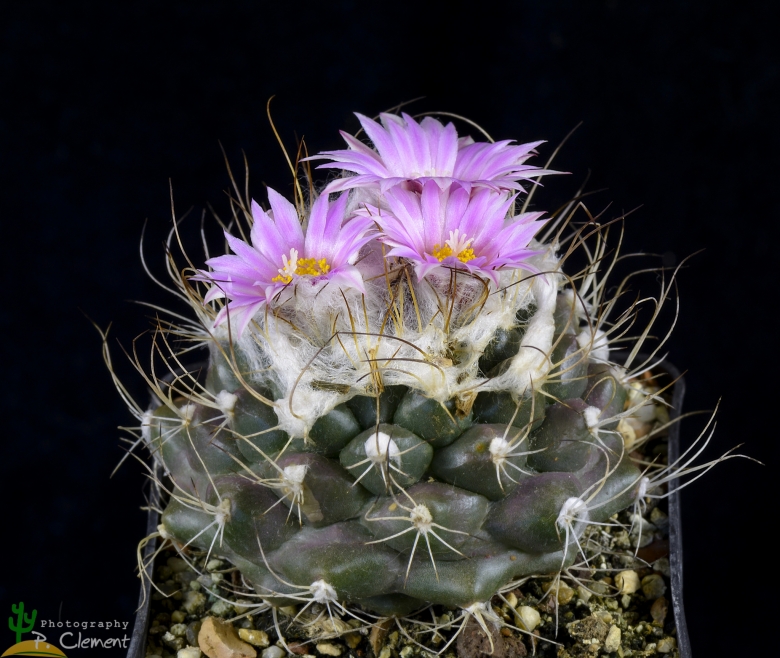
Pediocactus laui (Turbinicarpus laui) Photo by: Peiffer Clement
Origin and Habitat: Restricted to a small area in the Cerritos and Villa Juárez Municipalities, San Luis Potosi, México. There are six known disjunct subpopulations of Turbinicarpus lauiSN|11701]]SN|11701]], which are distributed over an area of 250 km² (extent of occurrence) and add up to an area of occupancy of less than 5 km².
Altitude: It grows at about 1,000 m asl.
Habitat and Ecology: This cactus grows in semi-desert (Chihuahuan Desert, although not typical) among bare areas with Helieta parvifolia and Ptelea trifoliata as neighboring vegetation. It occurs on gypsum-calcareous or gypsum soils. One of the localities is characterized by massive, dark-colored limestone rocks. The habitat is locally classified as matorral submontano. The population of about 4,000 mature individuals is severely fragmented and is suffering from a continuing decline due to illegal collecting and fires.
Synonyms:
Common Names include:
SPANISH (Español): Biznaugita
Description: Turbinicarpus lauiSN|11701]]SN|11701]] is a tiny solitary, flattened globose cactus. Some hobbyists refer to the genus as Gymnocactus.
Stem: Sub-globose to depressed globose, up to 35 mm wide and up to 15 mm tall.
Ribs: Divided into tubercles, arranged in 5 and 8 spirals with 3 or 4 tubercles per spiral, dull medium green, up to 5 mm high, rhomboidal and up to 10 mm wide at base, conoidal.
Areoles: About 1 mm long, copiously woolly with thick, long, white wool in youth, soon becoming bare
Spines: 6 to 7, and occasionally with an additional upper (sub-central) spine, glassy white with blackish tip, slender acicular, relatively stiff and slightly recurved, spreading, radiating; lower three spines up to 5 mm long, upper lateral spines up to 7 mm long, upper spine (s) ca. 18-22 mm long and generally incurved, connivent over the top of the stem, or occasionally erect to somewhat tortuous;
Flowers: White or pink, 35 mm wide, ca. 18 to 25 mm long; perianth segments with a slightly darker pale pink or pale tan middle-stripe; outer segments with a brownish middle-stripe on the outer surface; style white to pale cerise with 3 to 6 whitish stigma lobes which overtop anthers; stamens numerous with pale cerise filaments and golden yellow anthers, the longest to about 12 mm long.
Fruit: Small, round, greenish to brown, ca 5 mm in diameter, dehiscent by a longitudinal slit
Seed: 1.1 mm long, tuberculate, black.
Bibliography: Major references and further lectures
1) Edward Anderson “The Cactus family” Timber Press, Incorporated, 2001
2) James Cullen, Sabina G. Knees, H. Suzanne Cubey "The European Garden Flora Flowering Plants: A Manual for the Identification of Plants Cultivated in Europe, Both Out-of-Doors and Under Glass" Cambridge University Press, 11/Aug/2011
3) David R Hunt; Nigel P Taylor; Graham Charles; International Cactaceae Systematics Group. "The New Cactus Lexicon" dh books, 2006
4) Fitz Maurice, W.A., Sotomayor, M., Smith, M. & Fitz Maurice, B 2013. Turbinicarpus laui. In: IUCN 2013. "IUCN Red List of Threatened Species." Version 2013.2. <www.iucnredlist.org>. Downloaded on 18 February 2014.
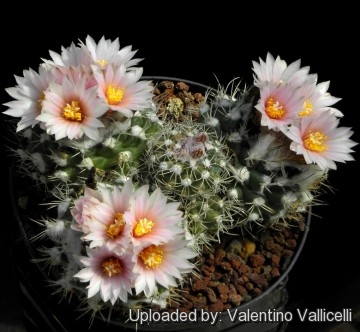 Pediocactus laui (Turbinicarpus laui) Photo by: Valentino Vallicelli
Pediocactus laui (Turbinicarpus laui) Photo by: Valentino Vallicelli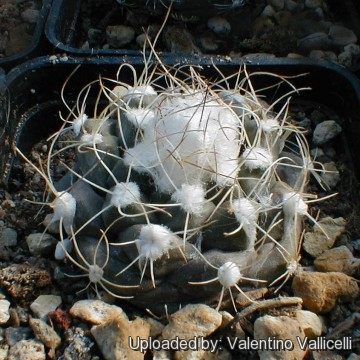 El Tepozan (White wool on bluish stem) (Turbinicarpus laui) Photo by: Valentino Vallicelli
El Tepozan (White wool on bluish stem) (Turbinicarpus laui) Photo by: Valentino Vallicelli Pediocactus laui (Turbinicarpus laui) Photo by: Andrea B.
Pediocactus laui (Turbinicarpus laui) Photo by: Andrea B.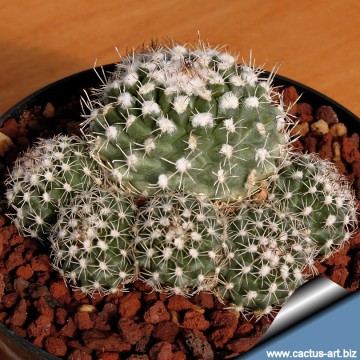 Pediocactus laui (Turbinicarpus laui) Photo by: Cactus Art
Pediocactus laui (Turbinicarpus laui) Photo by: Cactus Art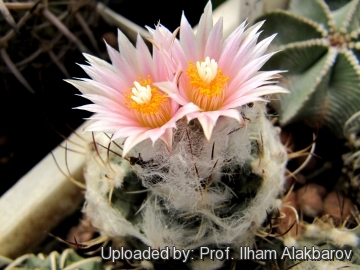 Pediocactus laui (Turbinicarpus laui) Photo by: Prof. Ilham Alakbarov
Pediocactus laui (Turbinicarpus laui) Photo by: Prof. Ilham Alakbarov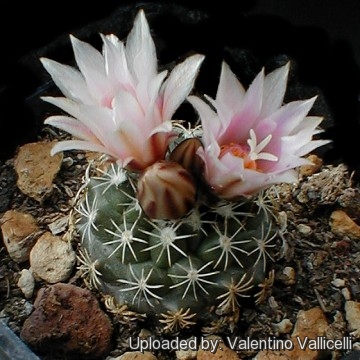 L1111 Buenavista Fine white spines, flower throat pink. (Turbinicarpus laui) Photo by: Valentino Vallicelli
L1111 Buenavista Fine white spines, flower throat pink. (Turbinicarpus laui) Photo by: Valentino Vallicelli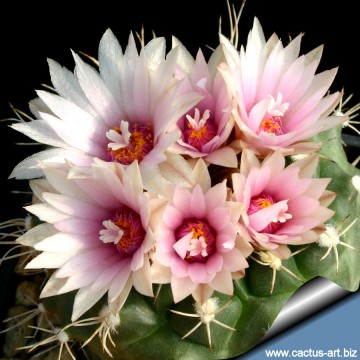 Pediocactus laui (Turbinicarpus laui) Photo by: Cactus Art
Pediocactus laui (Turbinicarpus laui) Photo by: Cactus Art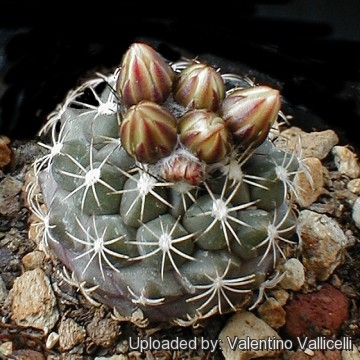 Pediocactus laui (Turbinicarpus laui) Photo by: Valentino Vallicelli
Pediocactus laui (Turbinicarpus laui) Photo by: Valentino VallicelliCultivation and Propagation: It’s quite prone to rot, especially after the first flowering. Needs a well-drained soil. Watering should be rather infrequent, but abundant, so that the soil becomes completely soaked. The fact that the plant retracts into the soil, and assumes a grey-green colouring between waterings, is perfectly natural and doesn’t cause any damage. Keep dry in winter or when night temperatures remain below 10° C. It is hardy to -4°C for a short period. Assure a good ventilation.
Exposure: Full sun where it obtains a flat natural looking aspect, or part sun.
Your Photos
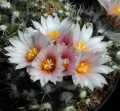
by Valentino Vallicelli

by Andrea B.

by Peiffer Clement
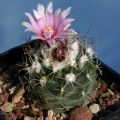
by Valentino Vallicelli
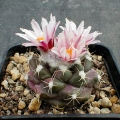
by Valentino Vallicelli
























